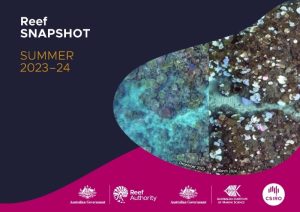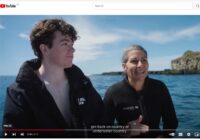The Reef snapshot: summer 2023−24 provides a summary of conditions on the Great Barrier Reef throughout summer, and how these conditions impact coral and Reef health and the actions being taken to help coral health.
The snapshot is a joint initiative of the Australian Government’s lead management and science agencies for the Great Barrier Reef, the Great Barrier Reef Marine Park Authority, the Australian Institute of Marine Science and CSIRO.
The snapshot is based on the latest available science and information at the time of writing.
It sets the scene for more comprehensive reports later in the year, such as the mid-year Long-term Monitoring Program reports by the Australian Institute of Marine Science and Marine Monitoring Program reports by the Great Barrier Reef Marine Park Authority.
The snapshot provides a point-in-time summary of Reef health monitoring conducted each year.
Download the Reef Snapshot: summer 2023-24.

Key findings:
- The 2023−24 summer has seen substantial climate driven impacts across the Great Barrier Reef, with widespread coral bleaching, two cyclones and several severe flood events.
- An outbreak of the coral-predator, the crown-of-thorns starfish continues in the southern region of the Reef, with some localised outbreaks in the northern and central regions.
- Aerial surveys were conducted over 1000 reefs spanning the Great Barrier Reef Marine Park and Torres Strait. Coral bleaching was observed on 73 per cent of surveyed reefs within the Marine Park and 6 per cent in the Torres Strait. Reefs in the far north of the Marine Park and in the Torres Strait recorded lower levels of coral bleaching.
- The highest levels of coral bleaching were found across the southern region and parts of the central and northern regions, where in some areas, corals were exposed to record levels of heat stress.
- In-water surveys, coinciding with aerial surveys, show coral bleaching at various depths as well as the variability of bleaching between sites on the same reefs.
The Reef Authority is continuing to work with the Australian Institute of Marine Science, the Reef Joint Field Management Program, crown-of-thorns starfish control Program, Tourism Operators, and researchers on further in-water surveys.
In water surveys complement aerial surveys by providing data on fine-scale impacts of heat stress, such as the severity of coral colony responses, the prevalence of bleaching in different habitats and depths, and any coral mortality at the time.







